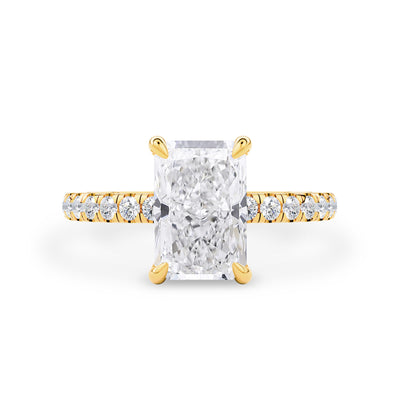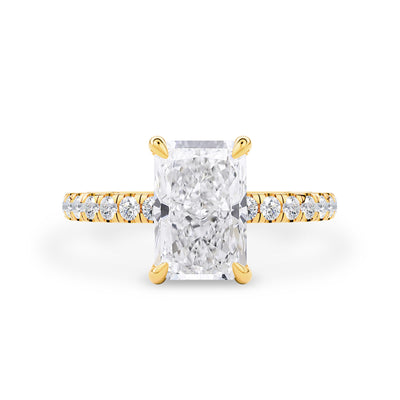What are Lab-Grown Diamonds?
Lab-grown diamonds, also known as synthetic or cultured diamonds, are diamonds that are created in a laboratory under controlled conditions. They possess the same physical, chemical, and optical properties as natural diamonds, making them virtually indistinguishable to the naked eye. The main difference between the two lies in their origin: while natural diamonds are formed over billions of years under extreme pressure and heat within the Earth's crust, lab-grown diamonds are created using advanced technology that mimics these natural processes.
There are two primary methods used to create lab-grown diamonds: High Pressure-High Temperature (HPHT) and Chemical Vapor Deposition (CVD). In the HPHT process, carbon is subjected to intense heat and pressure, similar to the conditions found deep within the Earth. The CVD process, on the other hand, involves placing a diamond "seed" in a vacuum chamber filled with carbon-rich gases, which then crystallize to form the diamond over time. Both methods result in high-quality diamonds that are chemically identical to mined diamonds.
Advantages of Lab-Grown Diamonds
Sustainability and Ethical Sourcing One of the most significant advantages of lab-grown diamonds is their sustainability. The traditional diamond mining process is often associated with environmental degradation, human rights violations, Lab Grown diamond and unsafe labor conditions. Lab-grown diamonds, however, are produced in a controlled environment without the need for destructive mining practices. This makes them a more eco-friendly choice for consumers who are concerned about the impact of their purchases on the planet.
Additionally, lab-grown diamonds eliminate the risk of purchasing a conflict diamond, or "blood diamond," which refers to diamonds mined in war zones and sold to finance armed conflict. With lab-grown diamonds, buyers can rest assured that their purchase is not contributing to unethical practices.
Affordability Lab-grown diamonds are typically 20-40% less expensive than their natural counterparts. This price difference is not due to a difference in quality but rather the shorter supply chain and lower production costs associated with lab-grown diamonds. For couples seeking an engagement ring or individuals looking for a stunning piece of jewelry, lab-grown diamonds offer a more affordable option without compromising on beauty or durability.
Quality and Variety Lab-grown diamonds are often of higher quality than natural diamonds because they are created in a controlled environment. This allows for greater precision in terms of clarity, color, and cut. Additionally, since lab-grown diamonds can be produced more efficiently, they offer consumers a wider variety of sizes and shapes to choose from, Moissanite Rings including fancy-colored diamonds that are rare and expensive in the natural diamond market.
Lab-Grown Diamonds and the Future of the Industry
The growing popularity of lab-grown diamonds is reshaping the diamond industry. As more consumers become aware of the environmental and ethical concerns surrounding natural diamonds, the demand for lab-grown options is steadily increasing. Major jewelry brands and retailers are now incorporating lab-grown diamonds into their collections, further driving their acceptance in the market.
The future of lab-grown diamonds looks promising, as technological advancements continue to improve their quality and reduce production costs. As these diamonds become more accessible to a wider audience, they have the potential to redefine luxury in a more sustainable and ethical way.






Comments